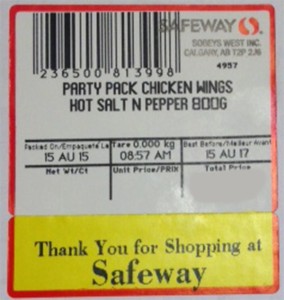In June 2014, a staphylococcal food poisoning outbreak occurred at an international equine sports event in Luxembourg requiring the hospitalization of 31 persons.
 We conducted a microbiological investigation of patients and buffet items, a case–control study and a carriage study of catering staff. Isolates of Staphylococcus aureus from patients, food and catering staff were characterized and compared using traditional typing methods and whole genome sequencing.
We conducted a microbiological investigation of patients and buffet items, a case–control study and a carriage study of catering staff. Isolates of Staphylococcus aureus from patients, food and catering staff were characterized and compared using traditional typing methods and whole genome sequencing.
Identical strains (sequence type ST8, spa-type t024, MLVA-type 4698, enterotoxin A FRI100) were isolated in 10 patients, shiitake mushrooms, cured ham, and in three members of staff. The case–control study strongly suggested pasta salad with pesto as the vehicle of infection (p<0.001), but this food item could not be tested, because there were no leftovers. Additional enterotoxigenic strains genetically unrelated to the outbreak strain were found in four members of staff. Non-enterotoxigenic strains with livestock-associated sequence type ST398 were isolated from three food items and two members of staff.
The main cause of the outbreak is likely to have been not maintaining the cold chain after food preparation. Whole genome sequencing resulted in phylogenetic clustering which concurred with traditional typing while simultaneously characterizing virulence and resistance traits.
Investigation of a Staphylococcal food poisoning outbreak combining case control, traditional typing, and whole genome sequencing methods
Eurosurveillance, Volume 20, Issue 45, November 2015
- Mossong, F. Decruyenaere, G. Moris, C. Ragimbeau, C.M. Olinger, S. Johler, M. Perrin, P. Hau, P. Weicherding
http://www.eurosurveillance.org/ViewArticle.aspx?ArticleId=21301
 Officials said that in all 38 people who purchased the cream puffs had sought treatment at several hospitals in 6 districts.
Officials said that in all 38 people who purchased the cream puffs had sought treatment at several hospitals in 6 districts.



 Health Authorities that symptoms such as stomach ache, nausea, vomiting were diagnosed among around 15 people taking part in a rugby match cocktail party.
Health Authorities that symptoms such as stomach ache, nausea, vomiting were diagnosed among around 15 people taking part in a rugby match cocktail party.  identified. This outbreak stresses the importance of respecting hygiene measures in collective catering and defining first management measures as soon as the results of the investigation are known.
identified. This outbreak stresses the importance of respecting hygiene measures in collective catering and defining first management measures as soon as the results of the investigation are known.